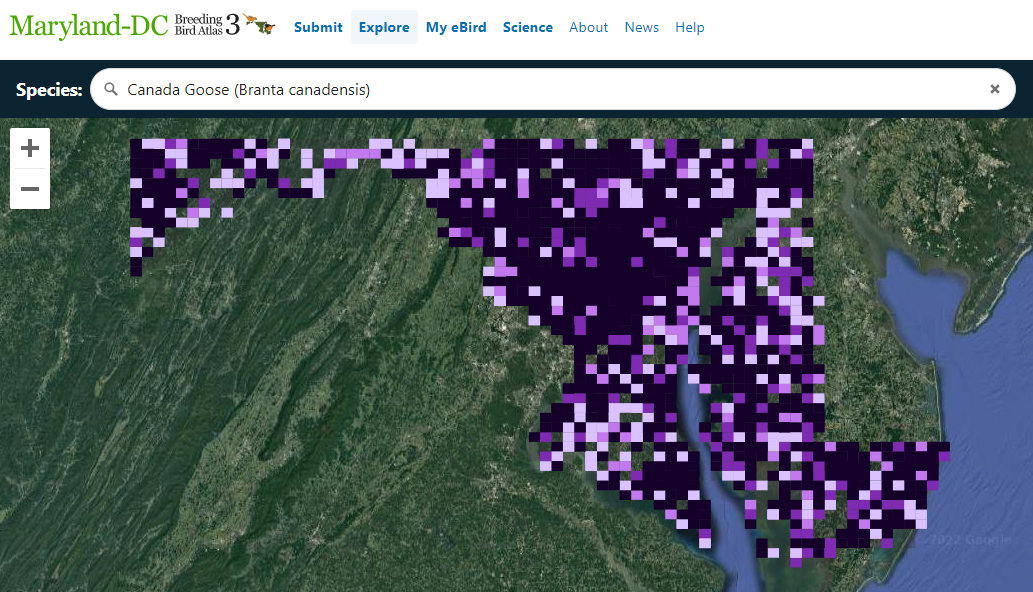
You can explore species maps of all breeding observations that have been reported to eBird for the Atlas. This will show you blocks that are currently missing that species. Head to the Atlas’s Explore page and type in the name of the bird you’re interested in; zooming in will reveal the location of each breeding observation and links to the checklist.
If you’re looking for some atlasing to do before the peak breeding season hits, you might consider heading out and targeting just one or two species that nest a little earlier. For example, the peak for Canada Goose goslings is mid-April to mid-May, before many other species are nesting. If you compiled a list of blocks in an area that don’t have Canada Goose Confirmed yet, half-a-day of driving to likely locations in each block should yield a few FL codes (recently fledged young) and help fill in the Canada Goose map.
You could use this same tactic for finding raptor nests, like Glenn Therres recommended earlier this year for Bald Eagles. Mallards, Wood Ducks, pigeons, Horned Larks, and goldfinches are other candidates for this approach—essentially, any species that is common and conspicuous can be targeted. Like Canada Geese, Mallard and Wood Duck chicks have also been reported most in the first week of May. Pigeons can be found nesting year-round, larks can be seen flitting across open fields, while goldfinches fledge later than many other birds and have a loud, distinctive begging call.
Focus on a single species in multiple blocks before or after ‘prime atlasing time’ to increase your efficiency. It’s a good way to become familiar with the habitat and access in a set of blocks. You can also mark down things to check out later in the season, like Purple Martin houses.
Late winter or early spring is also a good time for finding territorial owls. If you want a refresher on nocturnal atlasing tips, check out last year’s article. In a previous newsletter, Simon Best also put together a list of how he finds success while owling. His efforts have filled in much of Baltimore County’s screech-owl map.
If you have a technique for a species that works particularly well for you, why not share it? Send your atlasing tips to mddcbba3@mdbirds.org.


